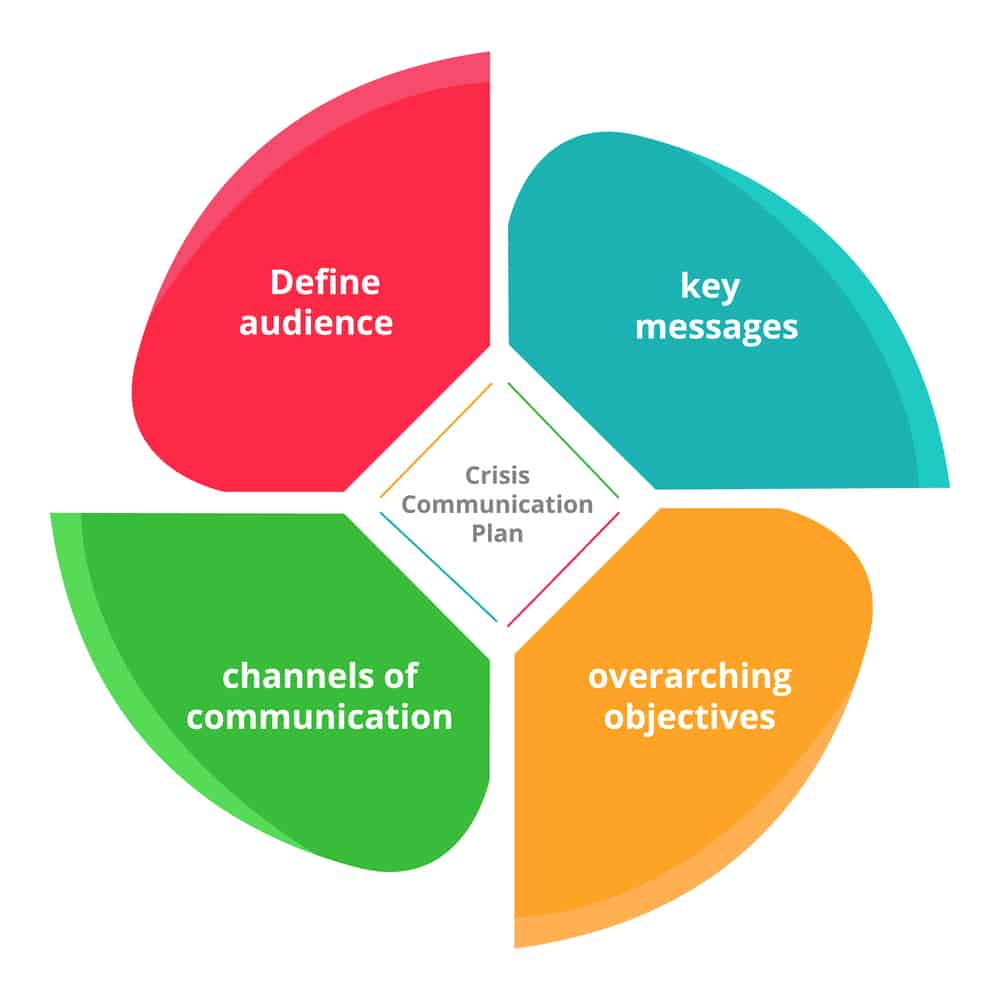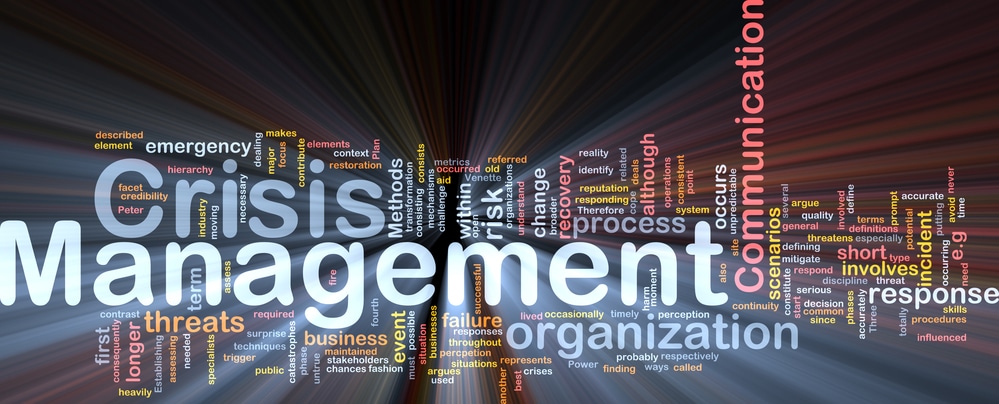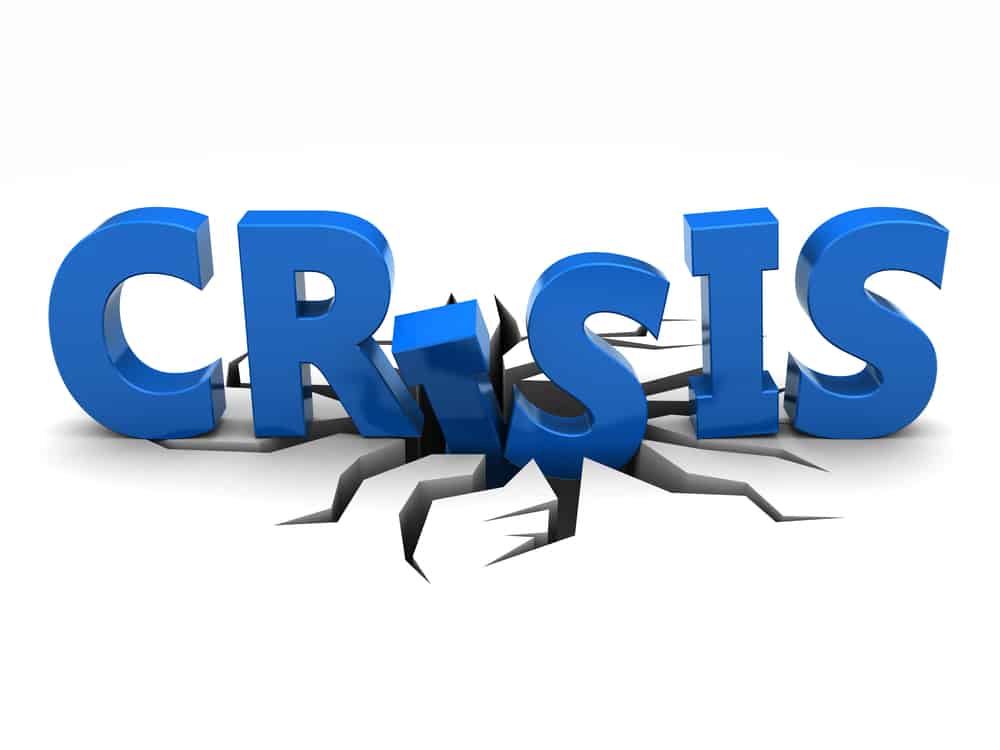Training Employees in Crisis Communication Skills

In the intricate web of corporate operations, crises are unwelcome yet inevitable companions.
In these critical moments, the potency of a team’s crisis communication skills becomes paramount. Their proficiency not only dictates the trajectory of crises but also steers the narrative, influencing stakeholders’ perceptions and safeguarding the company’s reputation.
Here, we’ll be exploring how organizations empower their workforce to survive various crises with the power of effective crisis communication training.
Here’s all you need to know about training employees in crisis communication skills. This is a compliment to our more specific active shooter training video.
What is Crisis Communication Training?
Crisis training embodies a structured and proactive approach aimed at equipping individuals within an organization with the necessary tools, knowledge, and mindset to handle and mitigate crises adeptly.
It transcends the confines of a mere theoretical exercise by instilling practical skills, fostering quick thinking, and being able to handle communication during such an event.
Comprehensive crisis training encompasses various facets, including role-playing exercises, workshops, and interactive sessions tailored to specific roles and levels within the organization. It blends theoretical frameworks with real-world case studies, offering a multifaceted understanding of crisis dynamics.
Such training cultivates a culture of preparedness, encouraging individuals to anticipate, identify, and communicate effectively during potential crises, thereby fortifying the organization’s resilience in the face of adversity.

The Importance of Crisis Communication Skills
Effective crisis communication stands as the lynchpin in safeguarding an organization’s reputation and stakeholder trust during tough times. Here’s why:
- They transcend conventional communication, embodying the ability to swiftly disseminate accurate information, mitigate escalation, and regain control of the narrative.
- Amid the chaos, adept communication can mollify concerns, assuage uncertainties, and steer perceptions favorably. Beyond reactive measures, these skills enable proactive engagement, fostering transparency and credibility.
- They serve as a shield against potential damage, ensuring that the organization emerges not only intact but fortified, earning admiration for its resilience in the face of adversity.
Key Steps to Effective Crisis Management Training for Employees

1. Create a Comprehensive Crisis Communication Plan
A robust crisis communication plan serves as the cornerstone of effective training. This is particularly important when designing lockdown procedures for your company.
- Begin by outlining potential crisis scenarios relevant to your industry, assessing their potential impact, and identifying key stakeholders.
- Craft clear protocols detailing communication channels, designated spokespersons, and a crisis management team, as well as escalation procedures.
- Establish a repository for critical information, ensuring its accessibility during challenging situations – which includes everything from active shooter situations and natural disasters to product recalls.
- Regularly update contact lists, media statements, and response templates to effectively communicate when crisis strikes.
- Conduct drills and role-playing scenarios mimicking realistic crisis situations to test the plan’s efficacy, familiarize employees with their roles, and ensure they’re well-prepared to handle crises.
This proactive approach not only fortifies preparedness but also engenders a sense of confidence among employees, enabling them to respond swiftly and cohesively when faced with the unexpected.

2. Conduct a Crisis Communication Training Program
Implement a structured training program encompassing diverse learning modules tailored to various roles within the organization. Here’s what should be part-and-parcel:
- Offer interactive workshops, seminars, and online courses focusing on crisis communication fundamentals, including key message crafting, media relations, and social media management.
- Incorporate real-life case studies of effective communication to illustrate best practices and pitfalls, fostering a deeper understanding of nuanced situations.
- Utilize simulated exercises to provide hands-on experience, enabling employees to navigate high-pressure scenarios in a controlled environment.
- Regularly review training methods to align with evolving communication trends and technologies, encouraging active participation, discussions, and feedback loops to enhance learning retention and practical application.
Well-rounded training courses not only hone technical skills but also cultivate a resilient and proactive workforce.

3. Simulate Realistic Crisis Scenarios
Engage employees in immersive simulations mirroring potential crises the organization might encounter. These simulations should replicate real-life scenarios, incorporating unexpected twists and complexities to challenge participants.
- Encourage cross-departmental collaboration, as crises often demand a multifaceted response. Designate roles and responsibilities, tasking individuals with specific functions that simulate their actual positions during a crisis.
- Simulations should encompass various communication channels, such as press releases, social media, and internal communications memos, allowing participants to practice diverse strategies to manage crises.
Post-exercise, conduct comprehensive debriefings to evaluate responses, identify strengths, and pinpoint areas for improvement. Such realistic simulations serve as key learning experiences, enhancing preparedness and refining crisis response capabilities within the organization’s values and framework.
4. Media Training for Employees
Lastly, equip employees with media training tailored to crisis scenarios. This includes sessions on interview techniques, the delivery of key messages, and maintaining composure in high-stress media interactions, which are crucial for any crisis management scenario.
- Offer guidance on crafting concise, accurate, and empathetic key messages suitable for diverse media platforms (particularly for a scenario as dire as a natural disaster).
- Simulate press interactions or conduct mock interviews to familiarize individuals with the nuances of facing media scrutiny and effective message delivery.
- Emphasize the importance of consistent messaging and avoiding speculative or unauthorized statements.
- Train employees to anticipate challenging questions and steer interviews toward key talking points aligned with the organization’s communications strategy.
Proper training ensures not only individual confidence but also alignment in messaging, safeguarding the organization’s reputation amidst media scrutiny and leaving things on a positive note.

Final Thoughts
In a world where crises can swiftly unfold, the investment in robust crisis communication training for employees stands as a pivotal shield for any organization. There are many examples of good crisis communication plans, so make sure to look around to find one you can use as a starting point.
By fostering preparedness, agility, and unified communication, organizations not only weather storms but emerge stronger, fortifying their resilience and safeguarding their reputation in the face of adversity.
Frequently Asked Questions
How do you train employees for crisis management?
Training employees for crisis management involves multifaceted approaches.
Conduct crisis communication training sessions tailored to different roles, incorporating realistic simulations mirroring potential crises.
These sessions should cover effective crisis communication, risk management, and emergency preparedness, enabling employees to respond adeptly when a crisis occurs.
What are the three C’s of crisis communication?
The three C’s of effective communication encompass Clarity, Consistency, and Compassion.
- Clarity ensures concise and accurate messaging.
- Consistency maintains uniformity across various communication avenues.
- Compassion entails understanding stakeholders’ concerns and empathetically addressing them.
How can organizations mitigate the negative impact of natural disasters through training?
Organizations can mitigate the negative effects of natural disasters by integrating crisis management training into their crisis communications strategy.
This involves conducting specialized training courses that prepare employees to manage crises stemming from natural disasters. These courses should emphasize swift response, risk management strategies, and adaptability to address the challenges posed by such events.
Why is continuous training crucial?
Continuous crisis management training is paramount because it ensures that employees remain adept at managing crises amidst evolving circumstances.
As such, regular updates and refresher training sessions help employees adapt their skills to different scenarios, enhancing their ability to respond effectively in a particular situation.